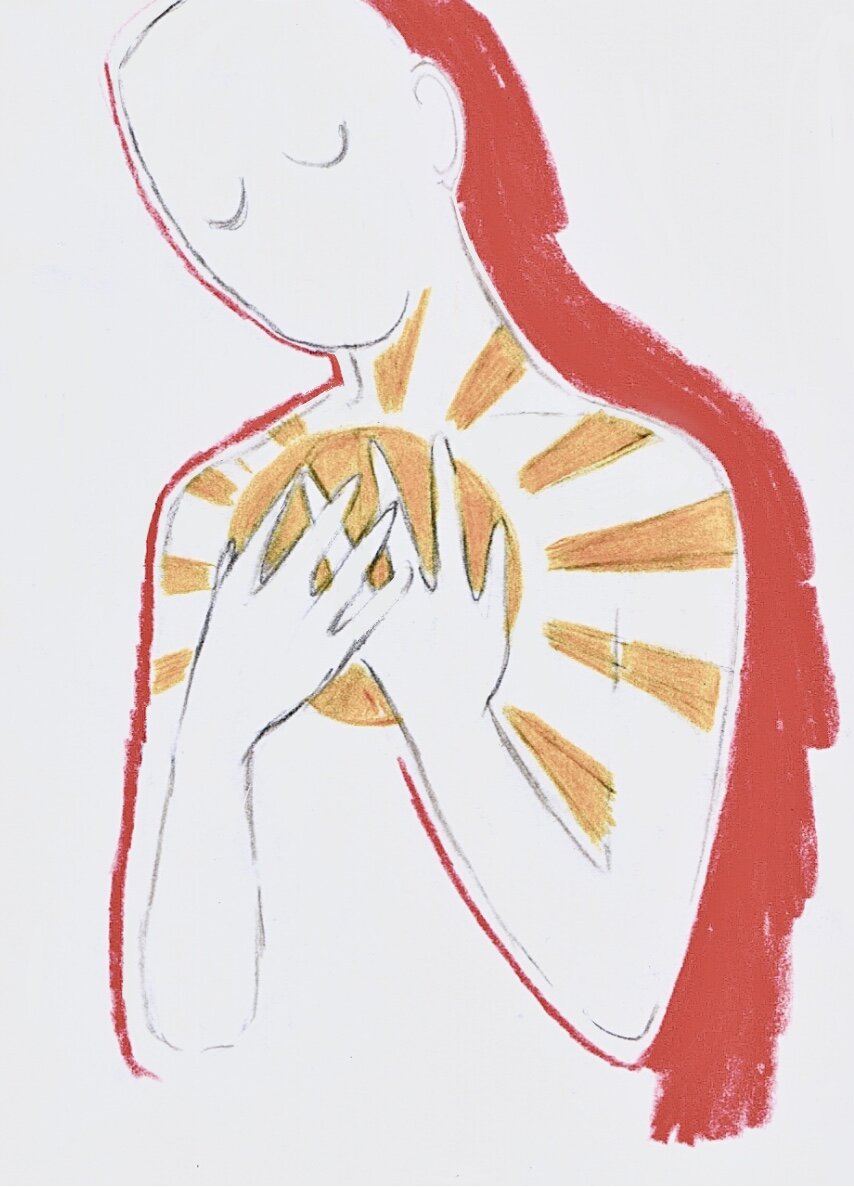‘The sun always has ways to reach us’: Contact in Ishiguro’s Klara and the Sun
Illustrated by Maja Kobylak.The best way to explore human nature is through the eyes of those who are not. Klara, an Artificial Friend, or AF, watches the world outside the window of her shop with a fascination and curiosity unmatched throughout Klara and the Sun. The embrace of an elderly couple, arguments in the street and the neglect of the Beggar Man and his dog all become moments of important observation for Klara, as the rest of the world seems to continue, oblivious. Kazuo Ishiguro effortlessly collides these moments, pointing to the fact that lies at the heart of what it means to be human – contact. Throughout Ishiguro’s novel, Klara is forced to examine her own contact with the world around her and whether she, as an AF made from parts rather than a heart, can truly understand or experience the “contact” that humans value so dearly.
Written shortly before the pandemic began, it is impossible not to see the echoes of our separated world and feel the palpable isolation that permeates this text. Not only are people lacking contact with others, but even education is reduced to a screen. The characters not only face the isolation caused by distance, but the society in which they find themselves seeks to exclude those who are not genetically engineered towards excellence. The lack of contact with the outside world leads to tense social meetings, showing the damaging effect of the meritocracies that trap these children. Ishiguro interrogates the idea that contact is not a singular experience, but a multi-layered phenomenon on which our society rests. Klara is chosen to look after Josie, a child living with an unnamed illness, which presents some of the first disruptions to her notion of friendship. AFs are designed to be the close friends of the children they’re bought for, yet despite this Klara is never quite Josie’s equal. Indeed, her role as an “artificial” friend is almost oxymoronic;they can never truly overcome the barrier of technology and its ability to understand the depth of human emotion and suffering that Josie experiences.
Klara observes the contact between AFs and humans, mothers and daughters, the “lifted” children and those cast aside. Not only must she try to understand her relationship with humans, but how this contact affects her place within a family. It is implied that the older generation in the novel had a life before this apparent banality. The Mother represents the bridge between the two. She has lost emotional contact with her former husband and his job within a factory - now powered by artificial intelligence - just as she has lost physical contact with her deceased daughter, Sal. Ishiguro is a writer who masterfully explores the past without allowing it to become totally consuming. It is these moments of contact with the past that act as looking glasses for the very nature of what it means to be human. When Mother realises that illness could also take her second child from her, she turns to creating an AF body that Klara could use to mimic Josie. Not only does Ishiguro thrust the reader into a moral and ethical dilemma, from the permanency of death to the question of who can really be defined as a “person”, but creates one of the most strikingly poignant moments of contact in the novel. Yet, tragically, the actual moment of impact is never reached.
Throughout, Ishiguro’s tactical restraint pulls us back from the brink of meaningful moments of contact. The language of the novel itself is reserved and restrained. It mimics the lack of actual contact that Klara has with the real world, unable to move beyond the factory settings permitted to her. She shows a strong affinity for The Sun, expressing continual gratitude for the life and power it provides to the world, ultimately serving as an extended metaphor for contact. When Klara tries to touch the light of The Sun on the shop’s floor, she is reprimanded by the other AFs who worry she will take all its energy for herself. In reality, she is making contact with the shop floor, not the true power of the sun, further illuminating her naivety about the true nature of contact for an AF. Indeed, Klara’s first moments of human contact prove to be volatile and unpredictable; first she is embraced by Josie upon her purchase, then soon after she is grasped by the elbows and threatened to be flung across the room by her friends. Arguably, Ishiguro is pointing to the fact that artificial intelligence and human beings can never have a meaningful contact where both experience the same feelings and respect as the other. Yet, Klara’s exceptional observational abilities point to a moment of hope where contact might not feel the same for both, but a meaningful understanding and comprehension of emotion could come just as close.
Moments of contact and the meaning of contact between two people appears to be the silent but powerful undercurrent in Klara and the Sun. Ishiguro pushes our boundaries of understanding emotion and connection whilst forcing us to examine our preconceptions about our understanding of artificial ‘life’. Ultimately, it becomes a debate of man vs machine, electronic components vs the human soul. Without a soul, without a “self”, can we ever truly have a moment of contact with another person? Klara appears to show us that we can.
